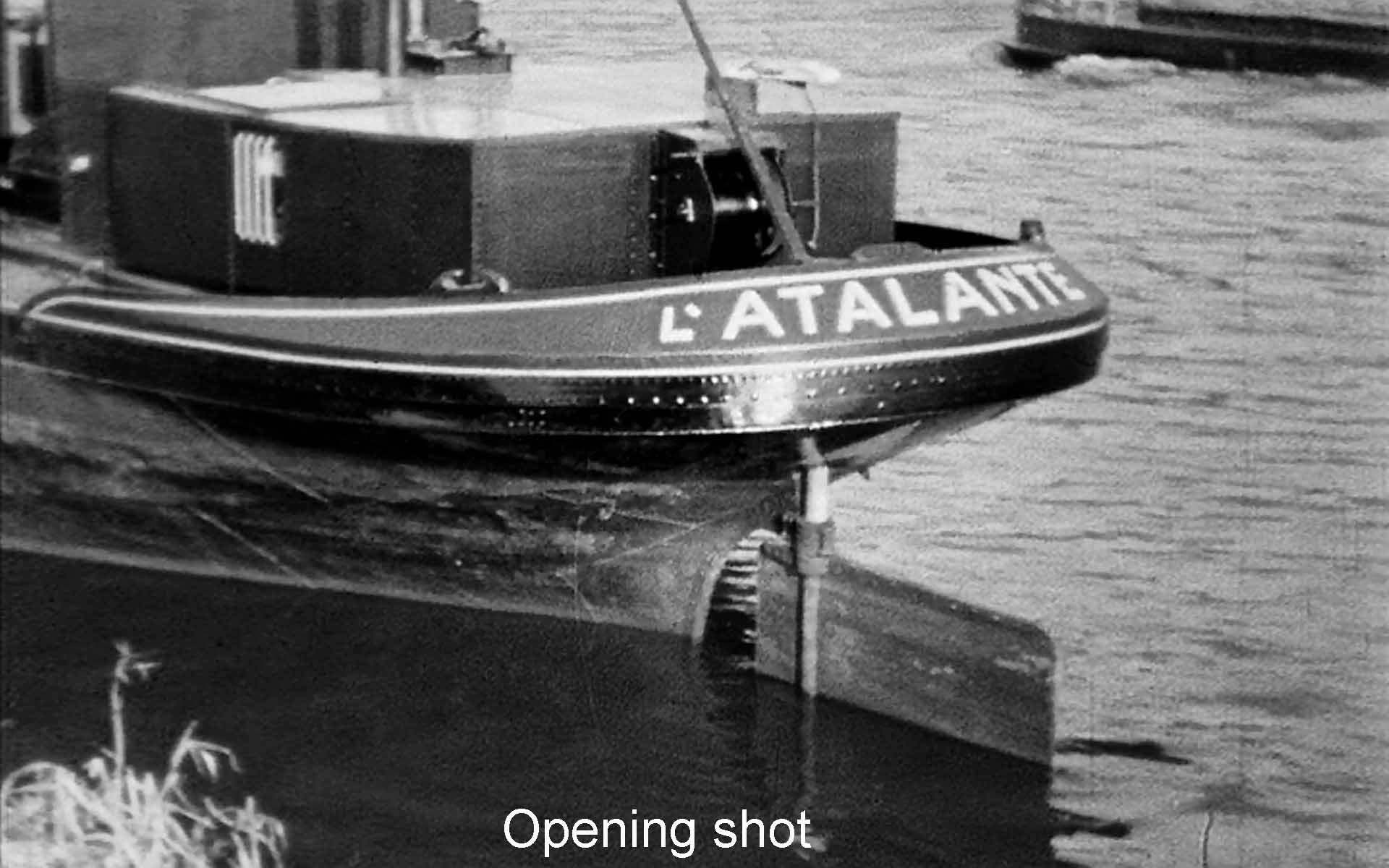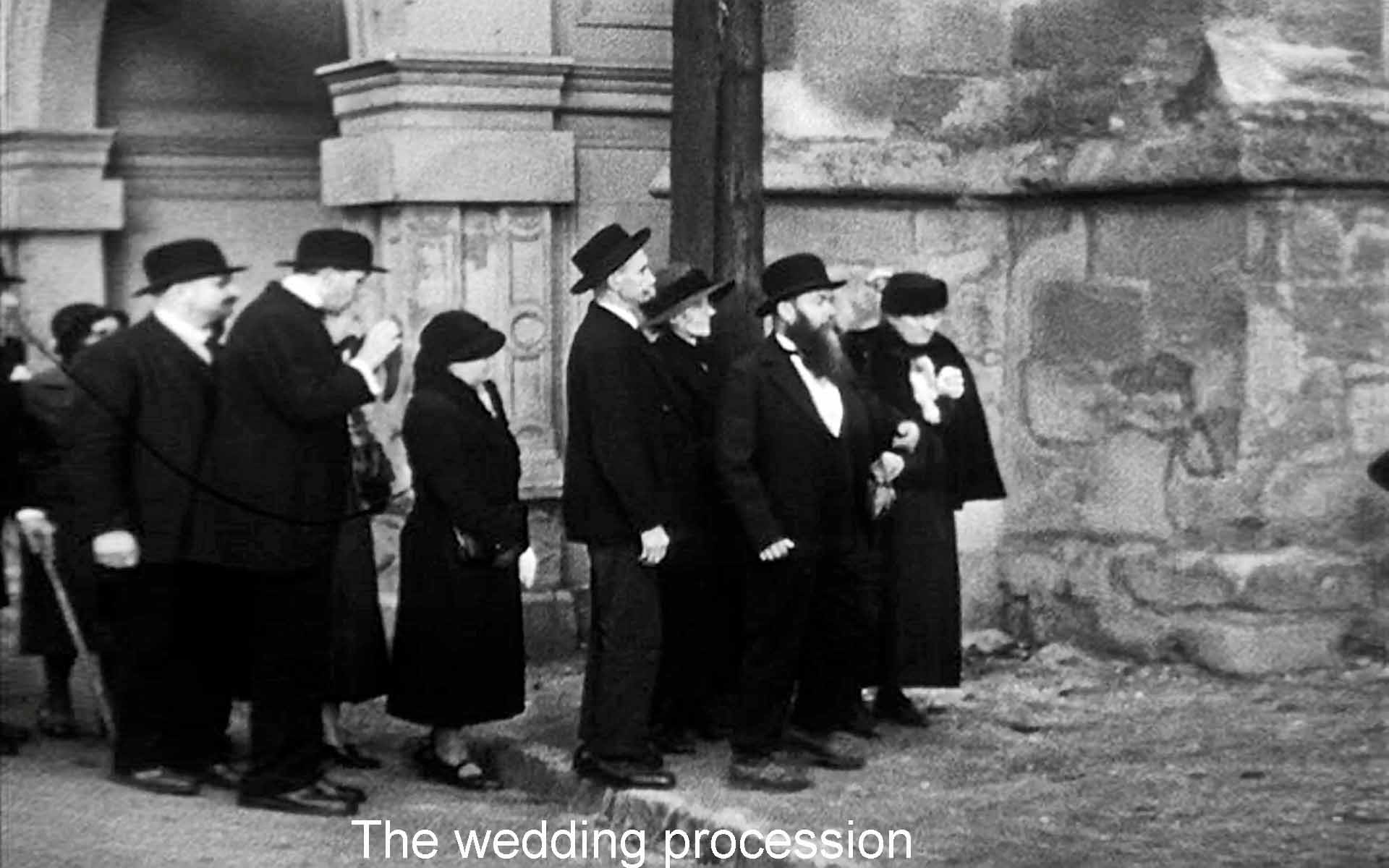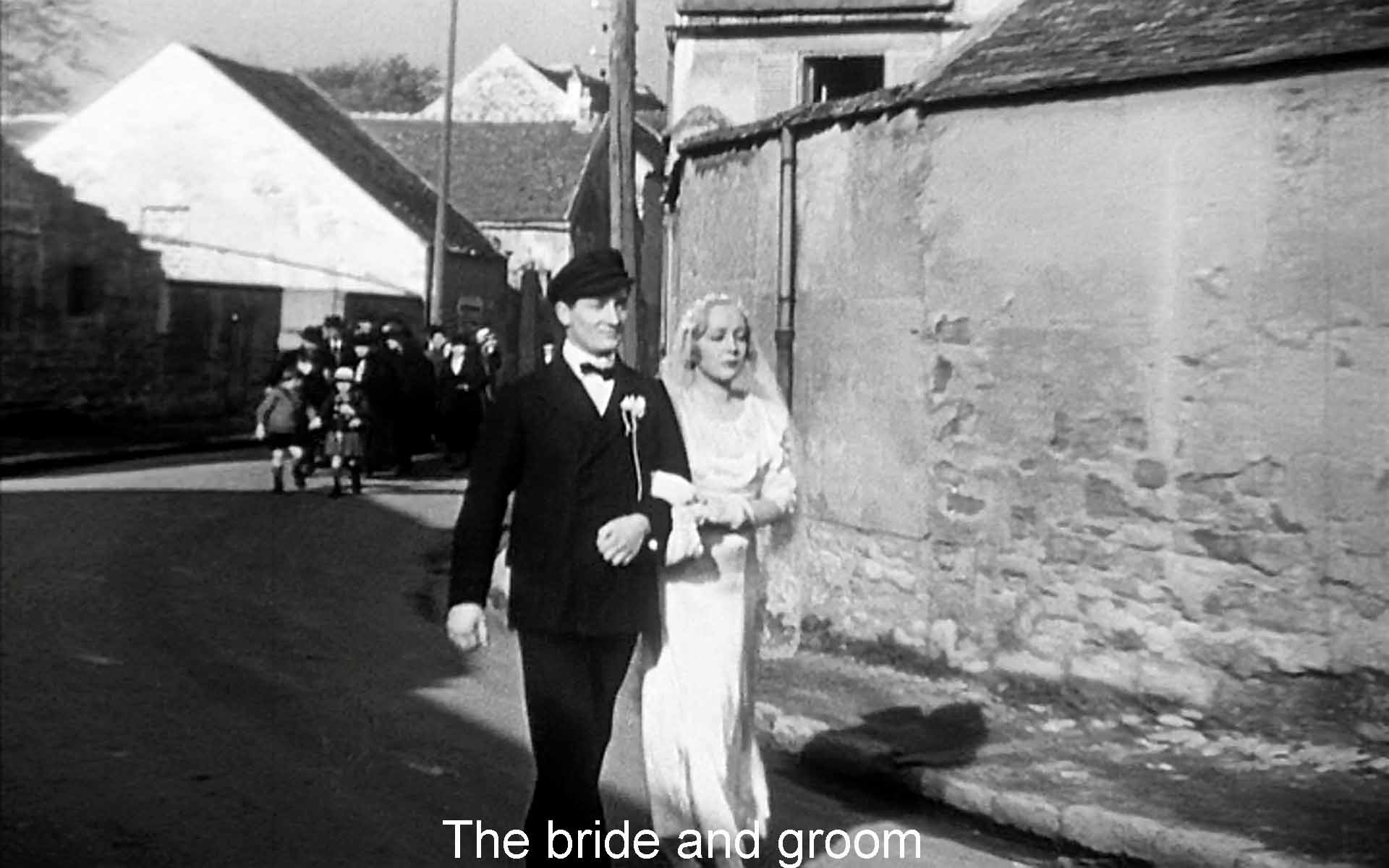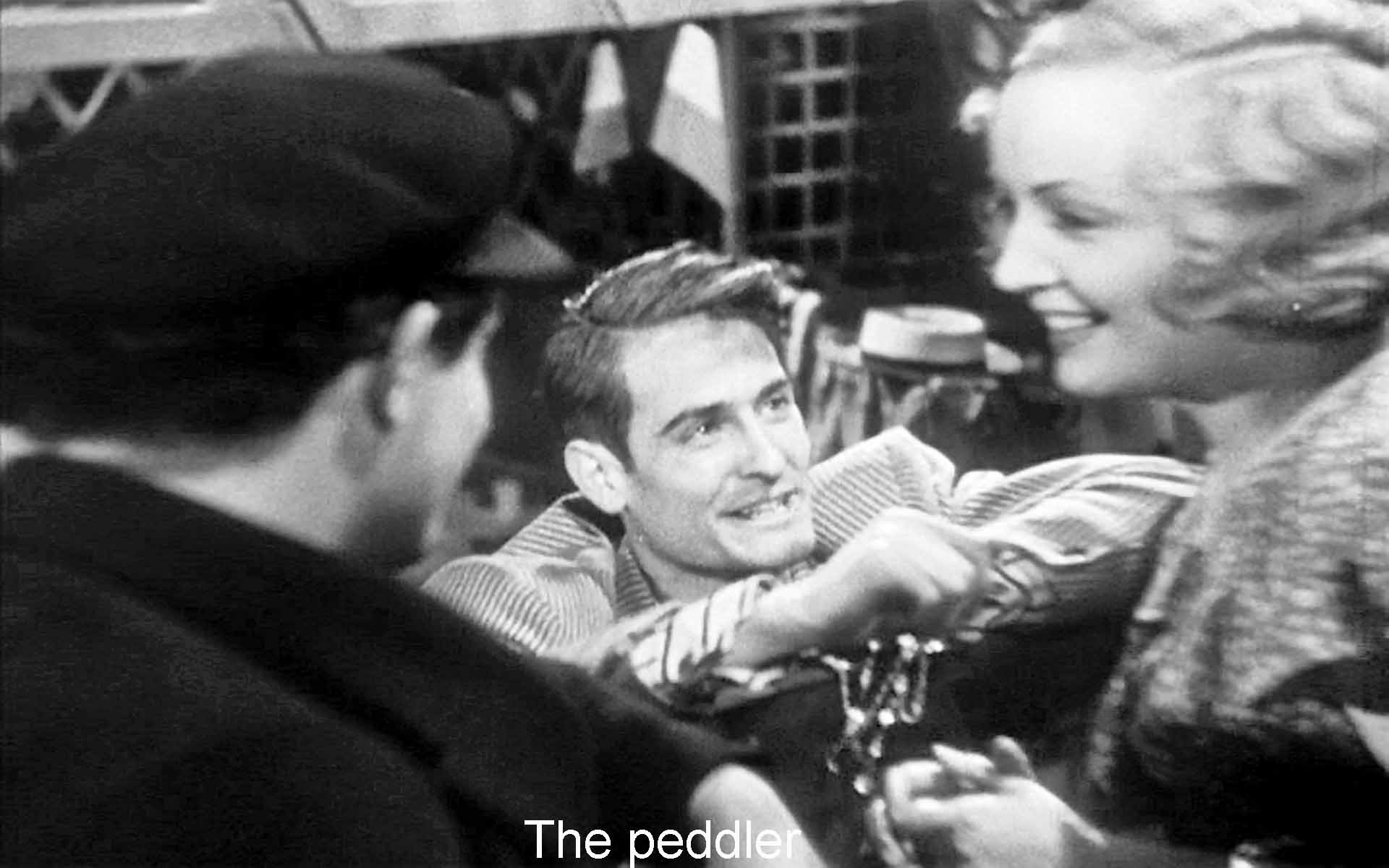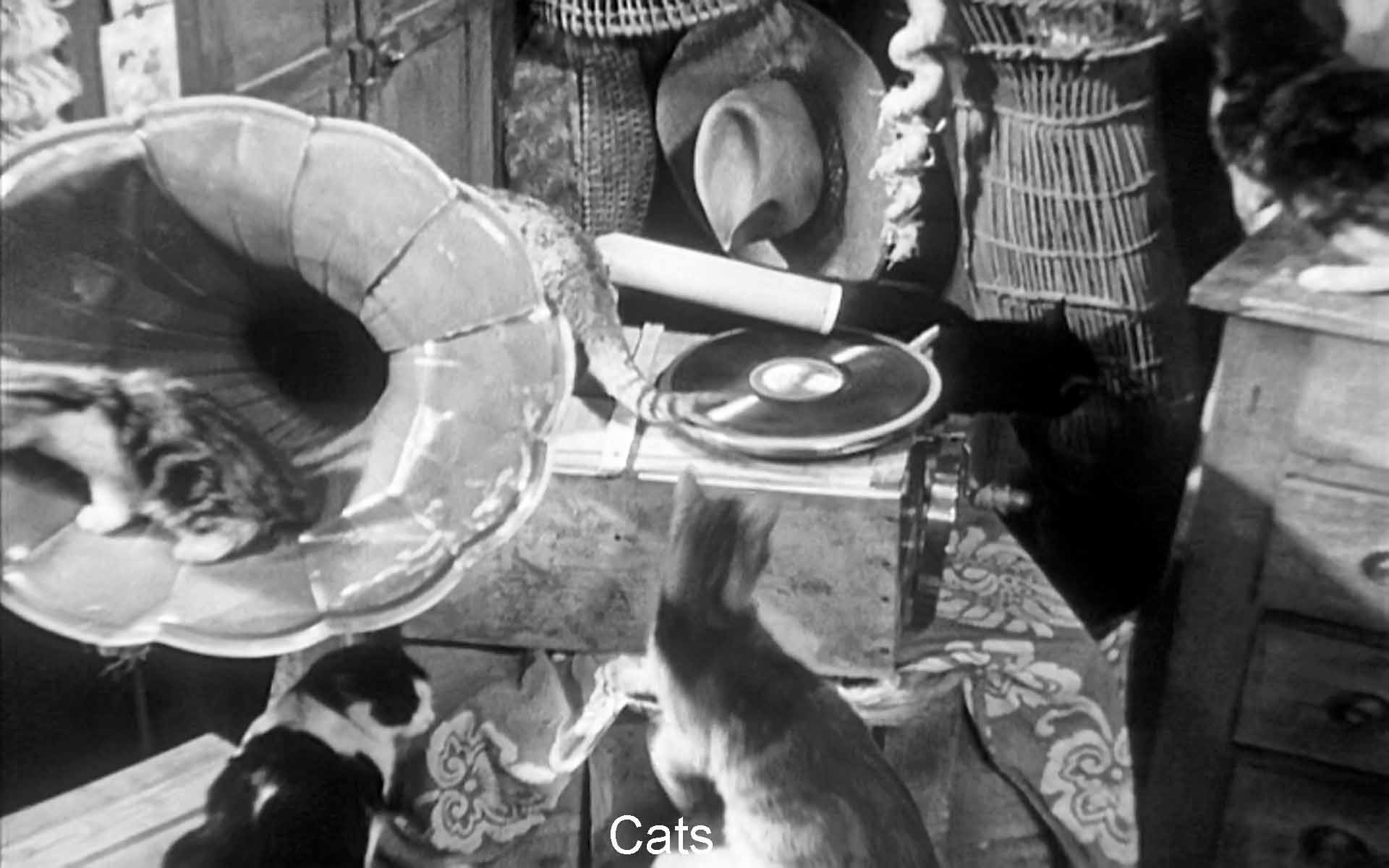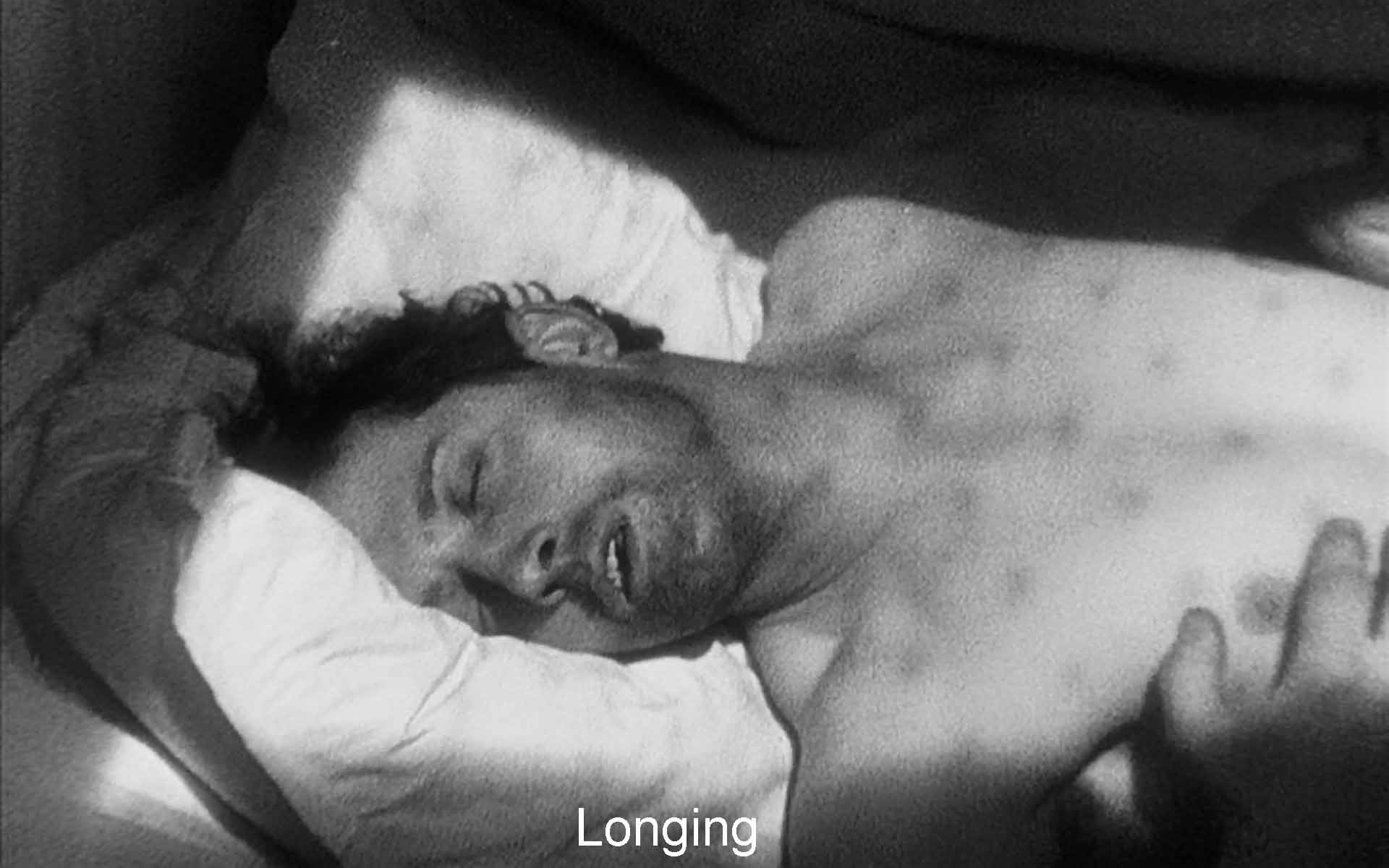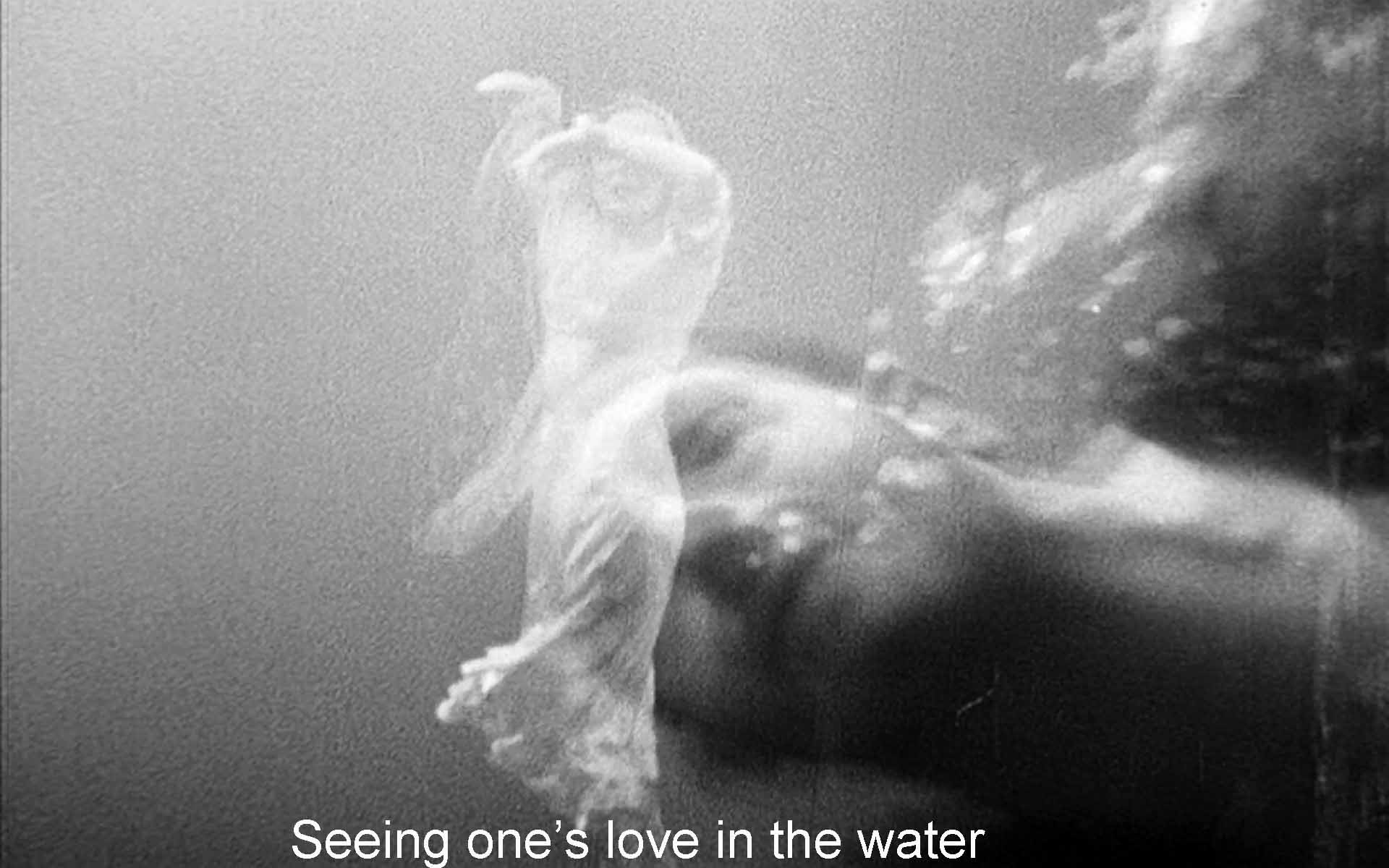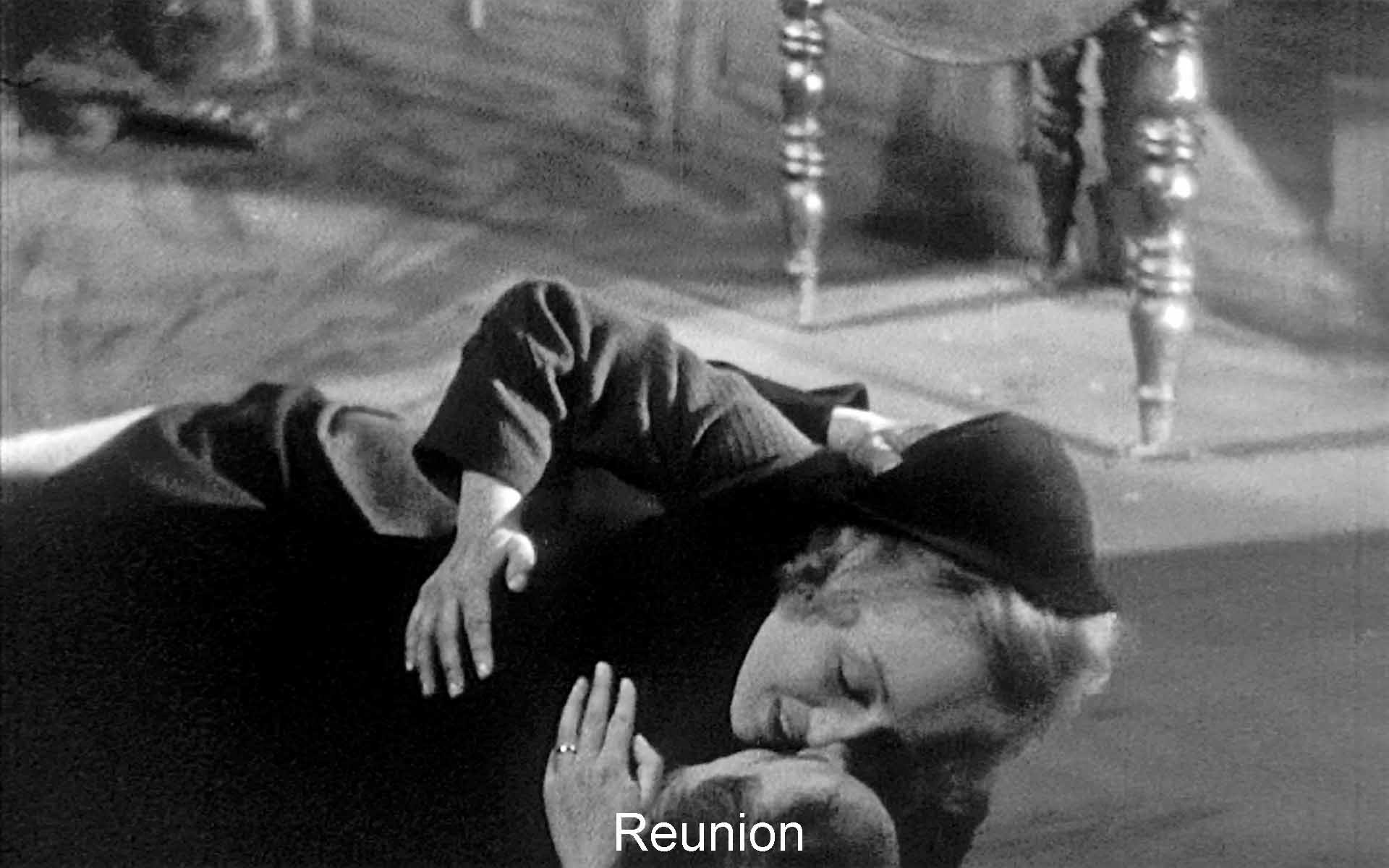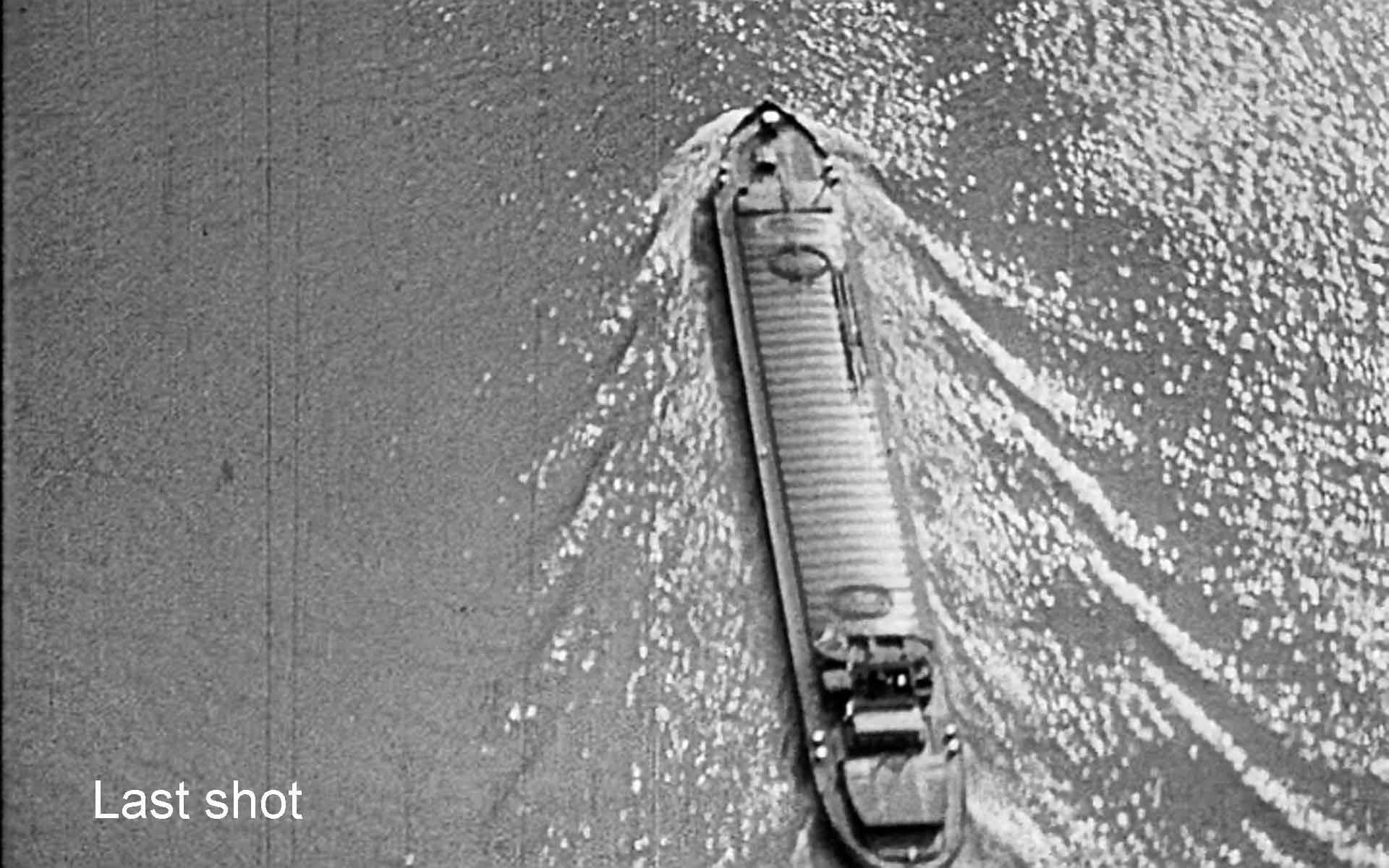Why the cats? Cats all over the place, having kittens, climbing on people, prowling here and there—why did Jean Vigo director put all these cats in this film? The standard answer would be, Jean Vigo loved anarchy because of his murdered father, and the cats introduce anarchy on this barge. Well, yes, but I think there’s a subtler answer. I think Vigo put those twenty cats in because cats explore, and this is a movie about exploring in all kinds of ways.
It begins with the marriage of Juliette, a girl who has never left her village, to Jean, the captain of one of the barges, the elongated cargo boats that travel the rivers and canals of France. The bride and groom are played, respectively by Dita Parlo, a German actress, and Jean Dasté, who had been the good guy in Vigo’s previous film, Zéro de conduite.
The opening shot shows the stern of the barge with its name L’Atalante, but Atalanta she is surely not. Atalanta was the fastest runner in all of Greek mythology, and this sturdy old barge is hardly that speedy. Cut to the great, solid village church. Do we get a shot of the bride and groom? Not yet. First we see Père Jules and the cabin boy, the crew of the barge, rushing about to get to the boat ahead of the bride and groom.
The cabin boy is played by Louis Lefebvre, a lad left over from Zéro de conduite, Vigo’s previous film. The great Michel Simon plays Père Jules, a role he and Vigo pretty much made up as they went along. Père Jules is very like Boudu, the character Michel Simon played in Jean Renoir’s fine Boudu Saved from Drowning (1932) a shaggy, bumbling, outrageous woodland god.
Jean and Juliette now appear making their stately way to the barge. Then comes the wedding procession dressed as if for a funeral, couples glumly marching, the very image of a dull village-bound bourgeoisie. The one spot of vitality comes from the man at the end who pinches the bottom of the lady in front of him—he is quickly rebuked and brought back in line. The bride and groom pass three monumental haystacks, immobility being the village hallmark. Contrasted to gloomy villagers are Père Jules and the boy rushing here and there, the boy’s dropping the bouquet in the river, his scrambling to replace it with an arch of wildflowers—all motion. And on the barge all is motion with the cats everywhere. Vigo has set up the basic polarity of his film, land and water, or better, boat; that which does not move and that which does.
Juliette the wife is obviously the pivotal character. Her exploration begins with her marriage and entry, dramatically, via a swinging beam, into the world of the barge—the very limited world of the barge. Again and again, Vigo emphasizes the long, narrow shape of the barge—phallic, yes, that’s part of the world she’s entering, but also very limiting. In one particularly lyrical shot she walks in her glowing white wedding dress the length of the long, black barge. A woman the barge passes crosses herself as if to pray for Juliette entering this special world.
At first all goes well. A serenade by her husband, Père Jules, and the boy, of a bargeman’s song greets her after the wedding night. And this song, the Chant des mariniers, will recur at key points in the film. Juliette settles into barge life, bringing a woman’s touch to this masculine world. She does laundry, even Père Jules’s underwear. She cooks. Drawing on village folklore, she encourages Jean to look for the face of his love in water. The bride and groom play wrestle. Meanwhile Père Jules has gone ashore with his friend Rasputin, and he comes back with some wrought iron gizmo to add to his collection. But then Juliette complains at Jean’s getting up at 5 a.m. to steer the boat. “It’s like this every night.”
She begins to be restless. The village girl wants to see a big city. She enjoys listening to the wireless with its music and news of Paris fashions—and we get the first sign of trouble when Jean shuts the machine off and tells her to leave it alone. (She doesn’t.) She wants to explore; he doesn’t.
The explorer par excellence is Père Jules, as Juliette finds out when she goes to his cabin. Like the wireless he plays music—he has a music box and a musical toy with a moving conductor. He himself sings and plays the accordion. She learns about all the places he’s been—Honduras, Yokohama, Melbourne, Papeete, and more—with mementos to show for all these travels. He has had girls, maybe men. We know that he is in touch with the supernatural from his blessing himself at the church in the opening sequence, and later, we will see him with a fortune-teller. He can be female as when he tries on a skirt for Juliette. He plays at bullfighting, at Spanish dancing, at African drumming, and he keeps the hands of his dead friend in a jar. Hands are what we explore with. Of his own hands, he says, “You’d never guess what these hands have done”—maybe murder.
Critics describe him as the essence of the anarchy so dear to Vigo’s heart and mind. Yes, surely, but he also embodies the exploratory spirit that Juliette now manifests. And Père Jules’s everywhere-ness vividly contrasts with husband Jean who sticks to his barge and the narrow canals it travels. As he had shut down the wireless, Jean very nastily breaks up the stuff in Jules’ cabin. Jules doesn’t care, because his explorations will continue and do, as he treks into Paris for fortune telling and drink and other adventures.
He is, in short, Dionysiac, Dionysus being the god of laughter, drunkenness, ungoverned passion, in general, the irrational. Jean is his opposite, snuffing out Juliette’s impulses to try new things.
Pretty much. The barge gets to Paris—well, a suburb, really. Jean and Juliette enthusiastically go to a dance hall. There a flamboyant peddler (Gilles Margaritis) accosts them with his rapid-fire patter and his myriad scarves to buy and magic tricks and talk of Paris and dancing with Juliette. Curiously, his name is apparently Jules. Juliette is rather taken with him, and Jean glumly puts a stop to this flirtation as he did the wireless and Jules’ showing his mementos. The peddler shows up the next morning at the barge and invites Juliette to Paris. Jean roughly chases him off. This character is identified in the closing credits as “le camelot” (the peddler). Interestingly, at the time this film was made, there was an extreme right-wing monarchist youth group called “les camelots du roi,” the youth group of the fascist Action Française. Just the kind of thing Vigo would have hated.
But the next night Juliette escapes to Paris and explores the mysteries of a streetcar, the jewels in a shop window, a toy shop. She is delighted, but soon discovers the downside of Paris as various men accost her. Jules, furious, rushes the barge off to the next city. Juliette tries to go there, but her purse is stolen. Her money is gone, and, because of the Depression-era unemployment, she can’t get a job . . .
Meanwhile Jean is distraught, and he tries her trick of seeing his beloved in the water. In a famously surrealist sequence he dives over the side and has a vision of his bride in the depths.
Vigo gives us shots of the couple in separate places and beds longing for each other. They are covered with spots to suggest—I’m not sure what, lust perhaps given the bump-and-grind music that accompanies these scenes. Or perhaps just their misdeeds (their both running off). Jean sinks into a depression, and Père Jules has to cope with the shipping company. Jean then perks up and gets them back to Paris. There Père Jules miraculously finds Juliette in a music store listening to the bargeman’s song. So we get a happy ending with a shot of the barge heading out into wide open waters. Exploring?
You can certainly read this film as about an anarchy represented by the cats and Père Jules and perhaps Jules the peddler contrasted to the stolid village at the opening and Jean’s bringing Juliette back into proper wifely behavior at the end. Vigo was stuck with this script. It was handed to him by the people at Gaumont. In the anarchic figure of Père Jules and those anarchist cats, he managed to subvert the smarmy plot and bring in his favorite theme. But I think there is another dimension to the film around the idea of exploring, and perhaps this richness of possibilities is one reason L’Atalante became what it is, a masterpiece universally admired.
